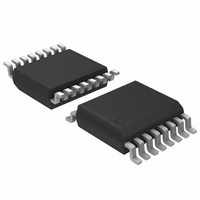ADT7483AARQZ ON Semiconductor, ADT7483AARQZ Datasheet - Page 9

ADT7483AARQZ
Manufacturer Part Number
ADT7483AARQZ
Description
IC THERM/ALARM 3-CHAN 16-QSOP
Manufacturer
ON Semiconductor
Datasheet
1.ADT7483AARQZ.pdf
(24 pages)
Specifications of ADT7483AARQZ
Function
Temp Monitoring System (Sensor)
Topology
ADC, Comparator, Multiplexer, Register Bank
Sensor Type
External & Internal
Sensing Temperature
-40°C ~ 125°C, External Sensor
Output Type
SMBus™
Output Alarm
Yes
Output Fan
Yes
Voltage - Supply
3 V ~ 3.6 V
Operating Temperature
-40°C ~ 125°C
Mounting Type
Surface Mount
Package / Case
16-QSOP
Full Temp Accuracy
+/- 2.5 C
Digital Output - Bus Interface
Serial (2-Wire)
Maximum Operating Temperature
+ 125 C
Minimum Operating Temperature
- 40 C
Lead Free Status / RoHS Status
Lead free / RoHS Compliant
Available stocks
Company
Part Number
Manufacturer
Quantity
Price
Part Number:
ADT7483AARQZ
Manufacturer:
ADI/亚德诺
Quantity:
20 000
THEORY OF OPERATION
The ADT7483A is a local and 2x remote temperature sensor
and over/under temperature alarm. When the ADT7483A is
operating normally, the on-board ADC operates in a free-
running mode. The analog input multiplexer alternately selects
either the on-chip temperature sensor or one of the remote
temperature sensors to measure its local temperature. The ADC
digitizes these signals, and the results are stored in the local,
Remote 1, and Remote 2 temperature value registers.
The local and remote measurement results are compared with
the corresponding high, low, and THERM temperature limits
stored in on-chip registers. Out-of-limit comparisons generate
flags that are stored in the status register. A result that exceeds
the high temperature limit, the low temperature limit, or a
remote diode open circuit causes the ALERT output to assert
low. Likewise, exceeding THERM temperature limits causes the
THERM output to assert low. The ALERT output can be
reprogrammed as a second THERM output.
The limit registers can be programmed, and the device
controlled and configured, via the serial SMBus. The contents
of any register can also be read back via the SMBus.
Control and configuration functions consist of:
•
•
•
•
•
TEMPERATURE MEASUREMENT METHOD
A simple method of measuring temperature is to exploit the
negative temperature coefficient of a diode, measuring the base-
Switching the device between normal operation and
standby mode.
Selecting the temperature measurement scale.
Masking or enabling the ALERT output.
Switching Pin 13 between ALERT and THERM2.
Selecting the conversion rate.
TRANSISTOR
SENSING
REMOTE
1
CAPACITOR C1 IS OPTIONAL. IT IS ONLY NECESSARY IN NOISY ENVIRONMENTS. C1 = 1000pF MAX.
C1
D–
D+
1
I
Rev. 1 | Page 9 of 24 | www.onsemi.com
Figure 15. Input Signal Conditioning
DIODE
BIAS
N × I
I
BIAS
f
C
emitter voltage (V
current. Unfortunately, this technique requires calibration to
null the effect of the absolute value of V
device to device. The technique used in the ADT7483A is to
measure the change in V
different currents.
Figure 15 shows the input signal conditioning used to measure
the output of a remote temperature sensor. This figure shows
the remote sensor as a substrate transistor, but it could equally
be a discrete transistor. If a discrete transistor is used, the
collector is not grounded and should be linked to the base. To
prevent ground noise interfering with the measurement, the
more negative terminal of the sensor is not referenced to ground
but is biased above ground by an internal diode at the D− input.
C1 can be optionally added as a noise filter (recommended
maximum value 1,000 pF).
To measure ΔV
switched among two related currents, I and N × I. The currents
through the temperature diode are switched between I and N × I,
giving ΔV
measurement.
The resulting ΔV
filter to remove noise and then to a chopper-stabilized
amplifier. This amplifies and rectifies the waveform to produce
a dc voltage proportional to ΔV
voltage and produces a temperature measurement. To reduce
the effects of noise, digital filtering is performed by averaging
the results of 16 measurement cycles for low conversion rates.
At rates of 16, 32, and 64 conversions/second, no digital
averaging takes place.
Signal conditioning and measurement of the local temperature
sensor is performed in the same manner.
V
= 65kHz
LPF
DD
BE
. The temperature is then calculated using the ΔV
BE
, the operating current through the sensor is
BE
BE
waveforms pass through a 65 kHz low-pass
) of a transistor, operated at constant
BE
when the device is operated at two
BE
. The ADC digitizes this
TO ADC
V
V
OUT–
OUT+
BE
, which varies from
ADT7483A
BE












